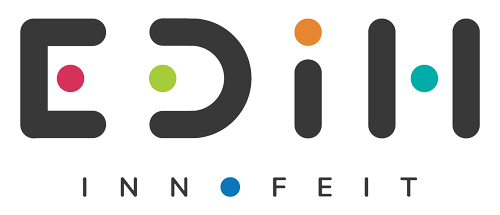Discover how simple AI tools can reduce manual work, help you work smarter, and improve your day-to-day operations. Hands-on course for small businesses that want to automate routine tasks – no tech skills required.
Short description:
This practical training offers small and medium-sized enterprises the opportunity to explore how artificial intelligence can automate routine tasks, improve customer communication, and simplify daily workflows.
Course Overview Table
| Chapter | Details |
| Partner | Solveo |
| Title | Automate routine tasks with simple AI tools, introduction to AI |
| Service | Automate routine tasks with simple AI tools, introduction to AI |
| Target Group | SMEs looking to automate parts of their customer-related workflows and improve customer experience |
| Format | Workshops, training |
| Focused on Key Technologies | Artificial intelligence, automation, customer workflows, AI tools |
| Status | In development |
| Stakeholders from SME/PA Side | Companies with frequent customer interactions, sales teams, marketing teams |
| Requirements for Participation | Open to individuals or teams working in marketing/sales or client-facing roles |
| Estimated Duration | 2 days, 16 hours |
Description of the Course
[Provide a detailed description of the course, focusing on its objectives, technical context, and unique value. Include examples and scenarios for real-world applications.]
Character Count for Description: recommended length 2,000-3,000 characters (including spaces).
Ideal Paragraph Structure:
- Introduction: 300-400 characters
- Technical Context and Examples: 700-1,000 characters
- Detailed Explanation of Core Concepts: 700-1,000 characters
- Tentative agenda of the course
- Conclusion and Unique Value: 300-400 characters
Introduction
This training is intended for companies interested in discovering how implementing AI tools artificial intelligence can support their daily client-facing operations—through task automation and better analysis of customer feedback. The focus is on practical tools and real examples that can be tested and applied immediately.
Technical Context and Examples
In day-to-day operations, many companies spend significant time on repetitive and manual tasks—responding to common client questions, preparing offers, sorting feedback, or manually updating spreadsheets. These activities, although necessary, often slow down teams and take time away from more strategic work. This training introduces practical ways to automate such tasks using AI-powered tools, even without technical knowledge or coding experience.
Participants will explore how tools (e.g., Zapier or n8n), when integrated with familiar platforms like Google Forms, Google Sheets, Gmail, or HubSpot, can automate tasks such as collecting customer feedback, tagging messages by topic or sentiment, and summarizing insights in a structured format. For example, feedback gathered through an online form can be instantly routed, categorized, and turned into a short report or follow-up task list.
Detailed Explanation of Core Concepts
The training does not focus on theory or complex technical concepts, but on how to use existing AI tools to automate small yet impactful tasks. Participants will learn how to identify time-consuming activities that can be streamlined with minimal effort.
Automating repetitive processes:
How commonly used tools in daily operations can be connected and made to interact in order to automate specific work tasks.
AI for personalized content:
Creating automated offers or presentations with ChatGPT, based on available customer or lead data.
Collecting and analyzing customer feedback:
How to automatically gather responses from forms, emails, or surveys, categorize feedback, and summarize key insights and next steps.
Training Modules
- Identifying everyday tasks suitable for automation
- Introduction to the core principles of building a simple customer automation workflow
- Generating personalized content using AI tools
- Automatically collecting and organizing customer feedback
Participants will gain practical knowledge on how artificial intelligence can be applied in everyday workflows, without diving into complex technical topics. They will leave with a clear understanding of how small automations can create real value in customer communication, save time, and improve operational efficiency.
Additional Course Information
| Category | Details |
| Developed skills | Participants will acquire knowledge and skills, including: |
| Identifying tasks suitable for automation
Creating personalized content with the help of AI Understanding the core concept of building a customer automation workflow Automatically collecting and categorizing customer feedback |
|
| Learning Methods Used | Demonstrations using real tools
Practical examples and mini-simulations Group work and short, focused exercises |
| References/Resources | [List key references, contributors, and online/offline learning resources. Include links where possible.] |
| Overview Slides | [Indicate if there are supporting slides or documentation and where they can be accessed.] |
